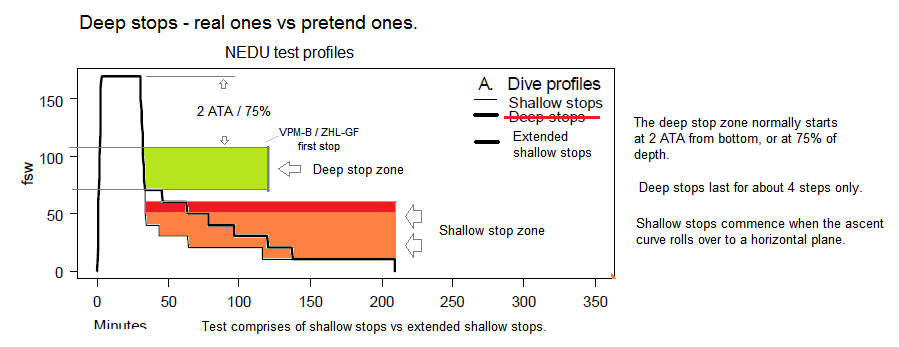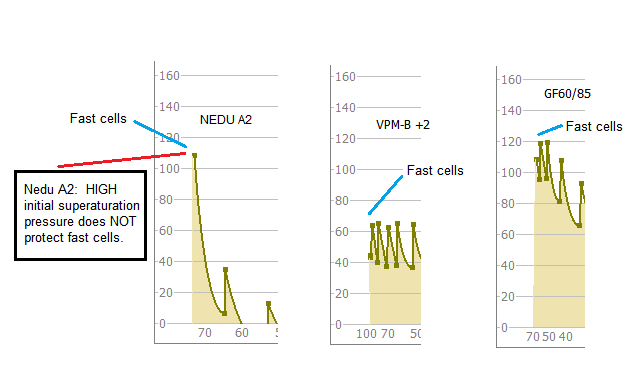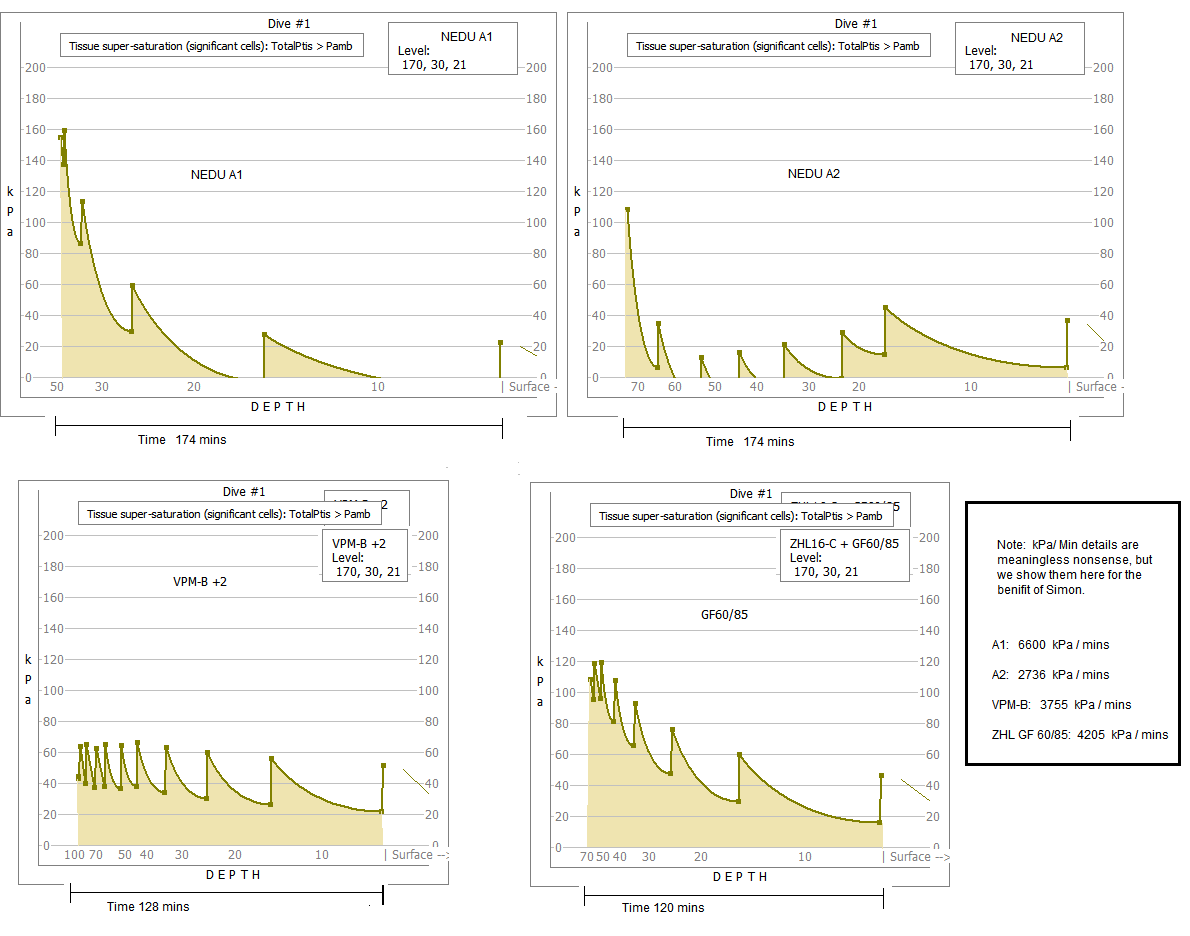I only skimmed over that long thread, here is what I found. I would be grateful if you could help me by pointing out where I got it wrong.
What did I miss?
These extra points and information were added to the discussion after the RBW thread closed. They are only available in other
threads. These points below really complete the picture.
**********
The supposition and assumption is that deep stops were actually tested in the nedu test, but they were not tested. The test instead fiddled the stops between 60 and 30 ft, using navy (shallow stop) test design models.
You can see the deep stops part is the green where VPM /RGBM / RD / ZHL+GF will make stops (100-110ft). But the test profile had its first stop much later (70-60ft start) - a shallow stop model.
They in fact made a test of extended shallow stops, coupled with thermal stress - no deep stops anywhere.. They tested thermal stress on two shallow stop profiles that have deco time that is over 2x longer than needed. This is an example of a "low stress" test method, where the results are then assumed to mean something else.
So, no actual deep stops in the nedu test.
*************
The assumption to connect this shallow stop test to deep stops, lies in A\ the fallacy of the reports title, and B\ these 'plausable explanations' that Simon makes:
The most plausible explanation for the NEDU result is that protecting the fast tissues from high levels of supersaturation early in the ascent at the expense of increased supersaturation in slower tissue late in the ascent (a characteristic of most deep stop profiles including many used by technical divers) is not a successful strategy.
Simon M
Lets examine those more closely:
".. is that protecting the fast tissues from high levels of supersaturation early in the ascent... "
No. The A2 starts with a supersaturation peak of 120 kPa (1.2 ATA). Clearly A2 doesn't have a deep stop, because real deep stop profiles start with several small supersaturation values. The protection mentioned above has not occurred. The A2 has double the VPM start pressure, and A2 appears to start as a shallow stop example. (shown below)
****
... at the expense of increased supersaturation in slower tissue late in the ascent ...
No. The A2 has less than half of a typical supersaturation pressure from a normal ZHL or VPM dive through the ascent. The A2 does increase its supersaturation pressure as it ascends but that condition is unique to A2 only. This inverse condition is not found in normal shallow or deep stop models. Both ZHL and VPM will either hold a steady maximum supersaturation or decrease it as the ascent progresses. A2 a not typical of deep or shallow model. (shown below)
*****
.... (a characteristic of most deep stop profiles including many used by technical divers) ...
No. Deep stop profiles typically finish with about the same maximum supersaturation pressure as the shallow stop equivalent profiles. (shown above)
Also this can be checked with individual cell pressure levels in MultiDeco - not significant as suggested above.
*******************
So Mr. kr2y5. that's what you missed.
All 'plausible explanations' given to connect this shallow test to deep stop conditions are invalid, and the assumptions that connect the test to deep stops, do not exist.
They tested something, but it wasn't deep stops.
Note: Anyone can make these profiles and diagrams above in MultiDeco. Supersaturation tracking and graphing is part of the program. Supersaturation pressure is the very core of deco calculations and its the basis of the limits in VPM and ZHL. The GF adjustment is directly based on these values.
Also a new feature, is that you can look at individual cell pressure that make up those graphs (right click, show cell #).







